#lnwr
Text
What is the 'Engine Rulebook' and where did it come from?:
So, this really early era of railways was a bit insane, and I am not quite well-versed enough to make a case-study out of everything - but like with my Big 4 scrap post, this is more about trends than singular examples - though some do appear.
The 'Engine Rulebook' is basically the set of rules that every engine ever is taught when built. It's a series of important rules, customs and doctrine used by managers to keep engines in line. Yes, I will use a little business-management theory in here, because early management styles have a major effect. And every railway has its own rulebook that may have differences. But there are a few key things in the 'Engine Rulebook' that I see being universal:
1: The company comes first. This is basically the company ensuring loyalty by indoctrinating the engine to see its railway company as the most important aspect of their life. In the Railway Series, Donald and Douglas have very strong ties back to Scotland and the Caledonian railway - which is why they enjoy blue so much. It's the Caledonian Railway colour! And then there's Duck - who literally continues to wear his GWR colours even after joining the NWR. He's deeply connected to the GWR because of this loyalty taught to him.

2: Railway rules. This includes signalling, signage, speed limits, whistles and their uses, headcodes, flags and every other piece of railway rules. They are read the rulebook, and learn everything in it. It's vital! Percy is an industrial engine who is never taught this rulebook - because industries don't have many engines and often pilfer bits from a bigger company's - and thus Percy doesn't know much about the rules of being on a railway when he arrives on Sodor.

3: Etiquette (based on duty). Now, I don't mean bowing or curtseying or the proper fork for fish - I mean the ins and outs of the duty the engine will be expected to complete. Passenger engines learn how to handle coaches and speak politely to passengers, freight engines learn how to handle trucks and look after different cargos, shunting engines learn a new set of rules for the yards - this sort of thing. Gordon struggles with trucks because he was never taught how to handle them.

4: The managers are always right. Touched on this in a reblog of this @mean-scarlet-deceiver ramble, but its basically that the engines are taught that their managers are right in all contexts (unless breaking one of the above rules) and need to be respected and have all directions followed. The manager says to shunt - you go and shunt. They say to go get scrapped - and a good engine listens without hesitation. Doesn't work out in real life all the time - see Oliver, or the Big Engines' strike - but it definitely keeps most engines in line.
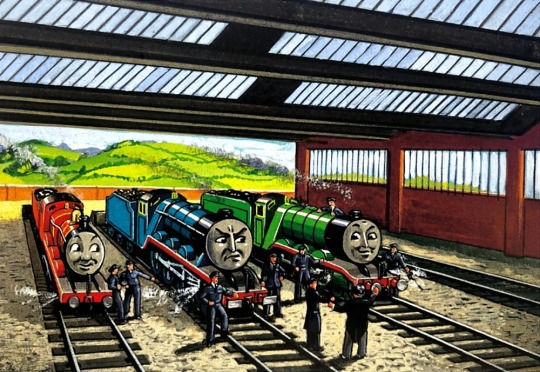
So we have these four core rules - but where did they come from? Well...
Regency Era Railways:
Straight off the bat - this is the era where every railway is figuring itself out. The L&MR was where everything was forged in fire - before it, the only railways that existed were isolated plateways in mines and the Stockton & Darlington Railway. None of these were anywhere near as complex as the L&MR, which is really the first railway 'system' in the way we might understand today. It's also where the first sentient engines begin to make a proper appearance and have an effect on people. Before, they were hidden in mines, if they existed at all - but now the public can see them!

Like, imagine this rocks up to collect you in an era when the most advanced method of transport is literally a horse. And it has a face. Remember, in this period people though that if they went over a certain speed or through a tunnel they would explode - so now the thing that might just kill them has a face?!
Managers would very quickly begin implementing ways to soothe their passengers. One way of doing that would be to dehumanise the engines - I can see many early engines being given basically no education because they are both seen as being 'working class' and because they are machines. When Rocket first ran, there were no public schools.
In this era, engines didn't know much, and they were isolated on their little systems. Yard managers are one of the few people with authority that these engines meet on a regular basis, and they use this to their advantage and cultivate this idea that the engines are entirely subservient to them. This is where that manager loyalty begins to become apparent - just not quite in its modern form.
The only education an engine would get is how to be loyal. Why should they learn signals, or passenger etiquette, or how to read? That is a driver or a guard's job. And so this really early era is characterised by dehumanisation and a lot of public-relations officers doing their best to downgrade the sentience of the engines. It's a lot of "yes they have a face, no they don't have intelligence, don't worry". This does extend into the Victorian era, as seen in Very Old Engines, as Skarloey arrives on Sodor with some principles taught at the workshop, only to be met with "you don't have rights, do your job." Which he naturally rebels at and then gets covered in a tarp for his troubles.
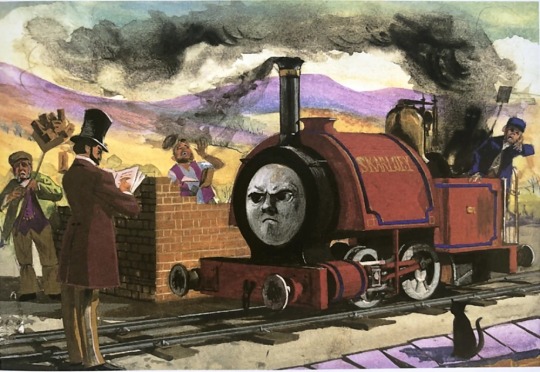
Of course, the Regency Era ends very soon into railway history, and just in time for a major game-changer.
The Victorian Era:
1838 is the year the first GWR train runs, and this railway in the South-west of England will have a huge impact on all railways that come after. First, the entire board of directors are very elitist and influential in parliament. This is a railway that needs to live up to its owners.
It is the GWR, not the L&MR, that writes the first book on engine learning. It's also the GWR, and not any other railway in the UK, that first develops a proper corporate culture for its engines that they actually like. The GWR does this by actually treating the engines like they have sentience.

Engines like Iron Duke are introduced to the 'Great Western Way' - this being the rulebook that Brunel and Gooch develop to best serve their wealthy owners. These engines are taught to read, understand the rules of the railway, passenger etiquette - which by now can be taught because there's less fumbling around blindly - and perhaps most importantly: they are taught a very proud mindset. The railway is the most important aspect of their lives, and they are to serve it to the best of their ability. All four of the rules appear in their first form here, except that the etiquette is not entirely based on duty, and instead all engines are taught all jobs - which horrified much of the rest of the railway companies.
But while this is going on on the GWR, the rest of the country's railways were trying to survive a crisis. Railway Mania swept Britain, and hundreds of engines and built (and destroyed) by the week. One thousand bills for new railways were submitted to parliament during this period, and while not all were built - it certainly had an impact. The LNWR was formed during this period, chunks of the Midland Railway, NER, GNR, GCR, Caledonian and basically every other major railway were all constructed in this time frame - but that didn't mean a drastic improvement in how the engines were treated in this area. Many North-western railways were influenced by the thinking from the L&MR, leading to entire fleets of early engines having zero clue how to act or even speak in some cases. When the bubble collapsed, many engines were scrapped - and this is where the other extremely important pillar stone of railway doctrine was introduced: engines are expendable, and should not want to hinder a company. The fourth rule is set into stone here, and goes unchanged and practically unchallenged all the way into the modern era.

This here, the end of steam in Britain, is able to happen because of principles introduced during Railway Mania. British Railways uses this rulebook and the laws that most likely surround it by this point to justify their actions, and also because thanks to this rulebook very few engines have the vague notion or idea to protest. Why would they, it goes against the rules!
The eradication of steam is almost directly caused by the era of Railway Mania and the principles managers introduced in the era to protect their profit margins. Without that doctrine, engines would have had a lot more rights and a lot more ability to protest being scrapped.
In other words, the 1840's was when scrapping began to appear properly, as well as the explosions, derailments and every other crash from the previous generation. Engines became unfeeling in this era - in the north at least. The GWR escaped this by being... well, not an economic bubble.
However, as the British Isles emerges from Railway Mania, two very strong railways vie for influence: the LNWR and the GWR. The LNWR has that traditional L&MR mindset - and it leads to a huge problem. The engines begin to learn how to speak from their crews, and moreover they question why their GWR counterparts are treated so much better. The LNWR also suffers from a number of easily preventable accidents caused by the engine having zero clue what to do.
Some railways land between the two, and it was the GNR that ended up formulating the four rules in their next evolution: engines were only taught their jobs. This was the GNR compromise with their board members. The board wanted a GWR approach, however the actual managers on the ground rebelled, worrying this would lead to the engines working together to demand fairer treatment. The Communist Manifesto was in major circulation at the time, and none of these companies wanted their engines getting any ideas. Instead, they implemented something of a class system, with express engines at the top and shunters at the bottom.
In the TVS, Emily is extremely abrasive towards Thomas (Seasons 8-12), and it may just have to do with the way she was raised, seeing shunters as the lowest form of engine. Gordon certainly did!

These three very distinct practices all melded and fused together on the Midland Railway - which of course ran right in between them all. The Midland Railway wrote the third proper rulebook in 1859, roughly twenty years after the GWR wrote its.
The Midland Railway's rulebook took the LNWR idea that engines needed to be taught to accept death, the GNR idea of a class system and the GWR importance of company loyalty and railway-rule-knowledge and fused them together, being able to create the rulebook that most British railways would use by 1890. The major exception to this was of course the Great Western, which slowly evolved its rulebook to use the LNWR ideas of engines being subservient to their managers while retaining the classless form of etiquette the engines were taught. The GNR would also hold out on some ideas from the GWR until it was amalgamated into the LNER, due to rising fears of Communism by the board.
Many smaller railways, such as the Furness Railway or the Highland Railway in Scotland, would use the GWR style, due to the smaller size of the workforce, and thus the potential necessity for engines to complete duties they were trained for.

Duck fits into his role at Tidmouth with such ease because he knows the theory behind every express train, every freight train, every style of shunting and branchline service. He doesn't need them, but the GWR engines were taught this just in case. Duck is excellent at his job, but he won't take any flak from the other engines because his GWR ideology makes him see them all as equal. This is of course part of the Great Western Way as explained in this post.
In direct contrast, Gordon has zero clue how to pull a freight train, and stalls on the hill because he physically doesn't know what to do.
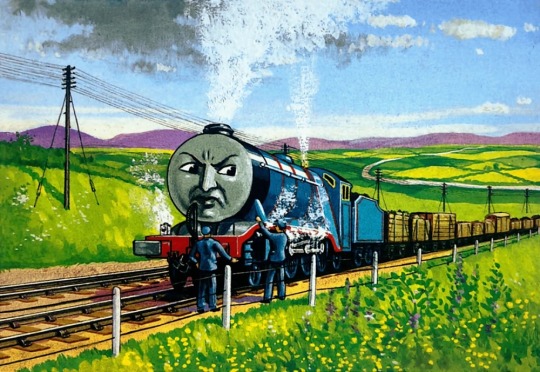
And this brings me quite neatly to Sir Topham Hatt I. See, this is a GWR man who runs a railway that is very heavily influenced by the Midland Railway rulebook ideology. Edward knows how to do multiple tasks because the Furness Railway used GWR practice (maybe that's why he likes Edward?) while none of the other engines do. Sir Topham Hatt's management style using GWR practice is so confusing to them. Why is James - who is mixed-traffic at best - pulling the express? Why is Gordon pulling freight? Why are the big engines shunting?!

And then we have Henry. Sir Topham and Henry have such a rocky relationship, and it in many ways comes from the fact that Henry had none of the formal education that I just discussed. He's a privately-built engine from stolen plans sold cheap. He doesn't actually know the etiquette of a passenger train - no wonder he stops when he doesn't like the weather! He doesn't physically know better, and so he's acting on his first instincts. This clashes so badly with the GWR style which places etiquette almost above everything else. Hatt reacts so badly and outright insanely to this because to him, Henry is actively and deliberately breaking every rule in the book because of his paint? And Henry doesn't have a clue. Look at how horrified he is!

And don't get me wrong, this is extremely unethical and very stupid, but it has a precedence in miscommunication, differing ideologies and Henry's foolishness.
This was another massive ramble with a lot of insanity, but I do enjoy writing these. Helps organise my mind! As usual, none of the above pictures belong to me, and feel free to chuck in a comment with your opinion!
#the 1800s#ttte edward#i need to calm down#thomas the tank engine#railway series#railways#real life railway#what are the rules for trains?#fanfiction writer#ao3 stuff#british rail#british railways#Great Northern Railway#gwr#Midland railway#LNWR#ttte au#sir topham hatt#ttte henry#ttte gordon#ttte skarloey#ttte duck#ttte emily#weirdo shit#long reads#very long post#britain#Great Western way
112 notes
·
View notes
Text

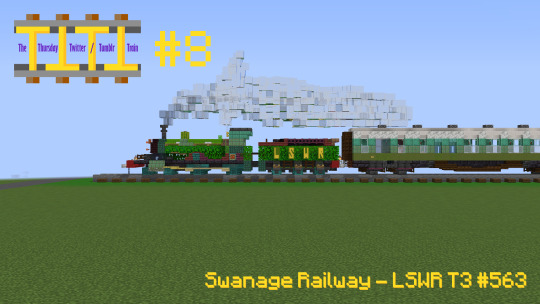
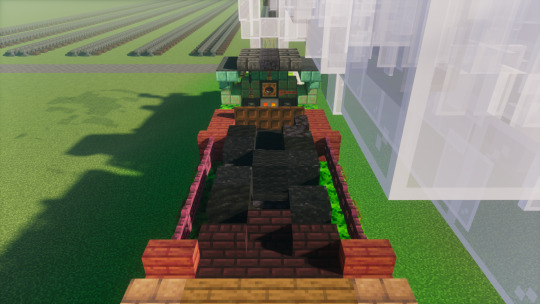





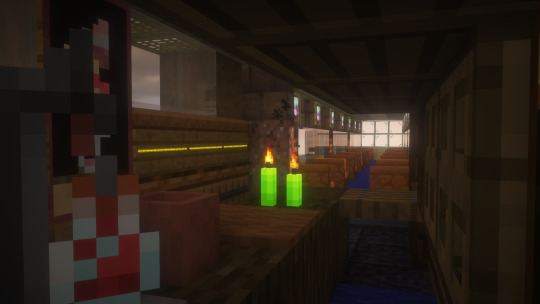
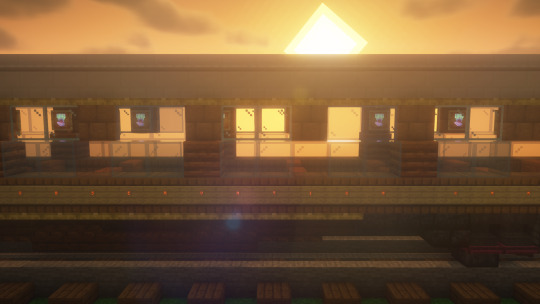
TTTT 8: The Swanage Railway's LSWR T3 #563, recently restored to run under her own power for the first time in 75 years! Complete with two ex-SR coaches and the "Devon Belle" Observation Car No. 14.
The latter of these has an incredibly storied history. After being retired from the SR's Devon Belle service, the LNWR-ambulance-turned-observation coach was towed behind Flying Scotsman on Alan Pegler's ill-fated tour of the US. Scotsman returned home soon thereafter, but the observation coach was left behind in San Francisco and attached to the side of an office building. The Swanage Railway bought #14 back in 2007, finally reuniting her with Scotsman on home turf in 2019.
#anyone for jungle leaf steam train?#minecraft trains#swanage railway#steam locomotive#mc shaders#lswr#lnwr#t3 class#southern railway
6 notes
·
View notes
Photo

The LNWR Coal Tank, one of my favorite locomotives
11 notes
·
View notes
Text

You all can have this James I did for shits and giggles.
London, AND North Western Anyone?
LNWR 19-Inch Goods
13 notes
·
View notes
Video
A Quick There And Back por Andrew
Por Flickr:
I don't think that the sidings viewers got too much chance to photograph the "Pug" as it scooted across the level crossing and back in rapid time. www.eastlancsrailway.org.uk
8 notes
·
View notes
Text

So I gave them fankids: Lily Anne (left) is the 2x5 fankid, and Knapford (right) is the 4x22 fankid. This is their dynamic.
And because of course I did, here's Lily Anne's 3D model, which is just James' model heavily modified for the purpose of getting down her general design. :] She's an inside-cylinder 4-6-0.
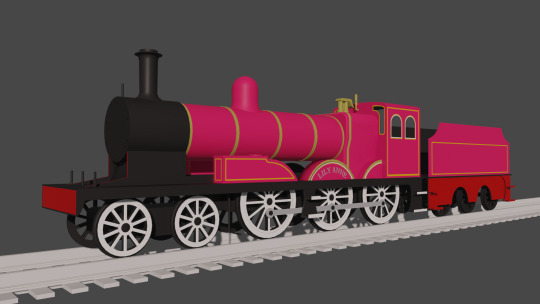
Purple was a little too obvious for my taste so I went with pink from some examples of lilies. This should be more redder :'v Her white wheels are based on Rebecca's because just thought it was cool. Her nameplate is similar to those of the LBSCR like Fenchurch, Stephney, etc.
There's some obvious errors like the boiler size and smokebox, as well as the pitch of the boiler (I want it to sit lower on the running board). I keep trying to convince myself that I can make the tall funnel work but no- It needs to go.
I'm using the following as reference since she's custom:
CR 49 + 903 Classes
NS 3500 (the perfect starter base, honestly-)
GER Class S69
NER Class S
L&YR Class 8 (mandatory; also designed by George Hughes like the Class 28s)
LNWR 19inch Express Goods Class (mandatory since the L&YR was temporarily owned by the LNWR shortly before grouping)
This also includes the FR 21s and L&YR Class 28s
Knapford is a rebuilt SR West Country, though I might change out some pieces so that he has some resemblance to Gordon. I'm thinking his livery should be primarily orange or be in that range because that's the color range I associate Knapford with. Don't know why. Not like Canon!Murdoch orange (I'm making it darker and richer).
#ttte shipping#my art#my sketches#ttte edward x james#ttte gordon x rebecca#a dozen years#opposite cardinals#eosr lily anne#eosr knapford#rebecca's title was changed to Tidmouth so i wanted to do something similar for Knapford's name#ttte#ttte au#ttte 2x5#ttte 4x22
18 notes
·
View notes
Text
The Blanched Soldier
Originally published in 1926; the Americans actually got this one first by a month.
I have covered the Boer War extensively in a previous post, but will add some notes on items directly relevant to this story.
The Imperial Yeomanry were a volunteer i.e. not career military force of mounted infantry formed in 1900 as reinforcements in the Boer War. They were disbanded in 1908 and merged into the Territorial Force, a precursor of what is now called the Army Reserve.
Mounted infantry were infantry that travelled on horseback and fount dismounted. They continued in use into the Cold War, with some units also being "mounted" on bicycles on both sides of the Second World War, before being replaced with mechanised infantry.
Middlesex was the traditional county that covered much of the North and West of what is now Greater London; losing a large chunk of its territory and population to the London County Council in 1889. It was abolished in 1965, but remains very much a thing for sporting and cultural purposes, with its own county cricket team being just one example.
A martinet is a strict disciplinarian, the name coming for a type of short whip. Arnold RImmer from Red Dwarf is sometimes described as such, although the character is clearly meant to be quite pathetic.
The Victoria Cross is the highest British award for gallantry, equivalent to the Medal of Honor and like that medal, frequently awarded posthumously. It also usually requires multiple witnesses to the gallantry in question. It trumps absolutely everything bar the George Cross in the honours system, and it is traditional for a private with a VC to be saluted by a general officer.
The most recent VC was awarded to Joshua Leakey in 2015 for his involvement in a firefight with the Taliban in Afghanistan in 2013, where he took control of a machine gun left on a hill and kept firing even as bullets ricocheted off the weapon.
An elephant gun is a large calibre rifle intended for use against elephants and large animals. They saw some military use in the World Wars by the British against armoured German snipers in the trenches of the First and by the Italians against British armoured cars in North Africa during the Second. Since ivory hunting became taboo, they are much less common.
Bedford is a market town in England and county town of Bedfordshire. It has two stations, the main one being located on the Midland Main Line running into St Pancras. Served by Thameslink, East Midlands Railway and London Northwestern Railway services, the last on the Marston Vale line to Bletchley, it is on the outer edge of the London commuter belt.
The other station at Bedford St. John's is served by LNWR services on the Marston Vale line to Bletchley, which is part of the former Varsity Line from Oxford to Cambridge. The station was resited in 1984.
The Sultan of Turkey - and the whole Ottoman Empire - in 1903 was Abdul Hamid II, a modernising absolute ruler who faced many assassination attempts and was ousted in a coup in 1909, replaced by his half-brother Mehmed V.
The Spectator is a British political magazine that has run since 1828. Being distinctly conservative in its world view, its former editors include one Boris Johnson.
"Squadron" was the traditional term for company or battalion sized cavalry or mounted infantry units. Outside of naval and air force use, it is now used for armoured units, which are frequently old cavalry units that just changed their level of horsepower.
Stoep is an Afrikaans word for "stoop".
Leprosy is transmittable by close contact, but you generally need a lot of it. It is still common in Brazil, much of Africa and India, but is now curable. Prejudice remains a big problem, with "leper colonies" still being common.
The general scholarly consensus is that it wasn't ichthoysis, of which there are many types. The NHS has more information here (with pictures): https://www.nhs.uk/conditions/ichthyosis/
21 notes
·
View notes
Text
TTTE Headcanon: Duke Makes A Friend
CW: references to past abandonment
————————
As Duke undergoes a restoration/rebuild at Crovan’s Gate Works following his 1969 rescue, I like to think his granchuffs visit him when they can, as well as the other SR engines. But they can’t always be there. And after years of isolation, I think Duke could be a bit sensitive to this. What if he’s feeling a little lonely?
What if a certain LNWR Large Bloomer class engine, rescued in the early ‘70s, arrives for his own restoration?
We don’t know the exact date of Bloomer’s rescue, but “early ‘70s” doesn’t rule out 1971 or 1972. And since Duke was in his shed for 22 years, I think his restoration could take a year or more. The timelines match up well enough for this to be feasible, in my opinion.
And feasibility aside, I think this idea is fun. I like to imagine Bloomer as someone who talks your ear off at the market, but also helps you haggle better prices with a wink and a smile. That sort of personality rubbing up against Duke could make for interesting interactions.
The way I see it, Duke is a little overwhelmed by his sudden re-exposure to the world. He’s still himself, but a bit more withdrawn. He’s trying to take it all in, trying to catch up in peace and quiet. And then Bloomer shows up.
(Sir Handel stops by, only to find Bloomer rambling about the weather. He retreats before Duke’s glazed-over stare turns to him.)
Once Duke recovers from his Bloomer-sized jolt, he grows annoyed. He almost snaps at Bloomer. In addition, he hasn’t been around an engine close to his age since his early MSR days. Mentoring comes easily to Duke, but he’s unsure and even a little afraid here.
But as they spend more time together, Duke realizes that Bloomer is also overwhelmed. He’s talking so much because he’s trying to push past his own feelings of disorientation and falling behind. He too is craving company, an equal peer and friend, after years of isolation. He was in a shed for even longer than 22 years.
So Duke softens towards Bloomer, beginning to engage with him. (At least, when he can get in a word edgewise.) He offers stories from his old railway and they discuss “the old days.” He finds they have a similar sense of humor, laughing with him over their little practical jokes on younger engines.
The two prove to be — despite the betting pool among the repair crews — balancing influences. Duke allows himself to befriend (not mentor or parent, but befriend) engines of his age and experience. Bloomer finds he doesn’t have to rush things, that he can live at a slower pace and not miss out on life.
Duke’s restoration is complete before Bloomer’s, but he makes a point of visiting Bloomer when he can. In turn, Bloomer writes to him once he’s taking his easygoing special trains, sending his correspondence on the most outlandish postcards he can find.
They get connecting trains with each other every now and then, happy to chat and tease the uppity young engines around them.
(Sir Handel doesn’t notice Peter Sam’s frantic cutting looks, nor the shadow falling over him. “And what good is that old dawdler, anyways? I say he’s corrupting Grandpuff.”
“Nah,” Bloomer says on the other side of the platform.
He jumps, jolting back on his rails. “What — but you’re supposed—”
“To not be here? Some of us endeavor to arrive early when we can,” Duke says, right behind him. “You should try it sometime.”
Sir Handel shoots forward with a strangled yelp.
“Ah, Duke! Thanks for your tips on this part of the island. It was a grand help.”
“It was the least I could to repay your advice about quiet running.”
Peter Sam chokes back a laugh, looking as though he’s trying to hold a frog in his mouth.)
#ttte#rws#ttte headcanon#rws headcanon#my headcanons#ttte duke#ttte bloomer#rws bloomer#ttte sir handel#cw: abandonment#past abandonment#tw: abandonment
20 notes
·
View notes
Text
The Main Line Engine Shed Allocations ca. 1999
Tidmouth 29A (DAY):
Gordon
James (LMS 12557, built 1896 Horwich as Class 27, fully rebuilt to Class 28(m) 1914 with few original parts remaining and considers that his age).
Barry (2MT tender engine, since 1985)
Henry (formerly modified LBSCR H2 4-6-2 built 1914, rebuilt 1936 Crewe to Stanier 8F 2-8-0, since 1966; Vickerstown 1921-1928, Tidmouth Night [6 pm to 6 am] 1928-1966). Takes The Sudrian train on Saturdays and Sundays, except when needed elsewhere when Bear or James takes the train.
Francis (Webb Coal Engine)
William (Webb 18in Tank)
Bear
George (BR Class 23). Pure goods engine, often double-heads with Bear.
Tidmouth 29A (NIGHT):
Dorothy (Standard 7MT #70055, built Crewe 1954). Night shift express goods engine, runs a combined train from Tidmouth and Knapford's harbors to Lancaster (since privatization on 1 January 1995) and comes back with the returning train.
Ewan (LB&SCR I3 #32091, built Brighton 1913). Takes the nighttime express, Lunar Lunger, from Tidmouth to Barrow with one stop at Wellsworth. Train consists of only four coaches, a first class sleeper, an open restaurant car, and a brake open coach. The fourth is a refitted baggage coach to be less a rail post office and more a mail baggage van, with pre-sorted boxes stacked by where they're from and written with where they're going.
Christine (LSWR G16 4-8-0T). Does the coal, water, and oil run at night to make sure everyone's got all they need for the morning runs.
Lady Macbeth (GWR County class 4-4-0)
Ada (BR 10100)
Ian (BR Class 57). Backup engine for the Lunar Lunger. Sometimes does special fast-goods runs to Barrow.
Stephen (BR Class 37 split-headcode). Handy engine around the city. Go anywhere, do anything.
These engines don't have an assigned berth or track, they just go wherever.
Tidmouth Station Coach Shed 29B:
Jinty, day station pilot at Tidmouth
Ted (LMS 2F dock tank), day station pilot at Tidmouth
Jessie (Night station pilot, GNSR Y class 0-4-2T, built 1915). Originally bought as spare parts for Percy, but on inspection she worked just fine and was willing to do work, so was assigned station pilot duty at Tidmouth.
Vickerstown 29C:
Sarah (L&YR Class 23). Station pilot (day).
Michelle (L&YR Class 25). Station pilot (night).
Bowen (LNWR Prince of Wales 4-6-0).
Janet (Midland Railway 115 class, built 1917). Backup power.
Wellsworth 29D:
Pauline (GNR Class 1 4-2-2, built 1894), bought by the NWR from scrap in 1915 alongside her sister Emily to work the main line as it made its way from Tidmouth to first Maron and then Vickerstown; eventually both were displaced by Henry and later Gordon so found work pulling trains from Brendam to Wellsworth to connect with the Sudrian and later Wild Nor' Wester.
BoCo, Emily, or Edward occasionally sleeps here too. As Pauline's train is just three coaches, it sits fully assembled at all times in a third, much longer berth.
4 notes
·
View notes
Text
Random Trains I Found Part 2:
So, I did a Part 1, and now I'm doing a Part 2 because there are many trains, and I enjoy procrastinating on just about everything. With this in mind, here's what I have in store:
Southern Pacific MC-1:

Ok, so these things were behemoths - 2-8-8-2 American giants which were built in 1908. And while they weren't the most useful engines built on this earth, they lived surprisingly long... as rebuilt cab-forward engines. Yup, the Southern Pacific swapped them around and turned them into Cab-Forward locomotives in the 1920s, having been the basis for the MC-2 and later AC models of Cab-Forward. Not a bad legacy!
SNCB Type 36:

Big Belgians! This 1909 class of 2-10-0 was built to work heavy freight trains over hilly terrain. And if you know anything about European history, then you'll know this class got caught up in WWI - only, for some reason they ended up in Russia, Poland and Ukraine? The reason for that is that they were sold to Russia to work lines in occupied, standard gauge Austrian territory (and Ukraine?) Five of them were eventually returned by the Poles. The type also influenced the L&YR to design their own 2-10-0... that wasn't built because of the same war.
Royal Bavarian State Railways S 3/6:

I like these purely because they look fabulous - and they were the second Pacific type in Germany, after their Baden brethren. See, prior to 1920, Germany wasn't served by one single railway, but rather a number of railways built by the nations that preceded the German Empire (which was only founded in 1870). So while Prussia was busy building the P8 class, the Bavarians built this! And annoyingly, I cannot find a model of one anyone, because Marklin won't ship to where I live.
JNR 9700 Type:

These engines are where we get the nickname 'Mikado' for the 2-8-2 wheel arrangement. They weren't the first 2-8-2's built, but were instead heavily promoted by Baldwin at a time when Japan was very interesting to the Western nations - a Savoy Opera of the same name had premiered in England in 1885, and Emperor Meiji was known in the US as 'the Mikado'. As for the engines? Apart from their part in wheel arrangement history, they were the most powerful engines in Japan when they arrived... but very little is actually known about their careers, only that they were scrapped in 1922.
LNWR DX Goods class:
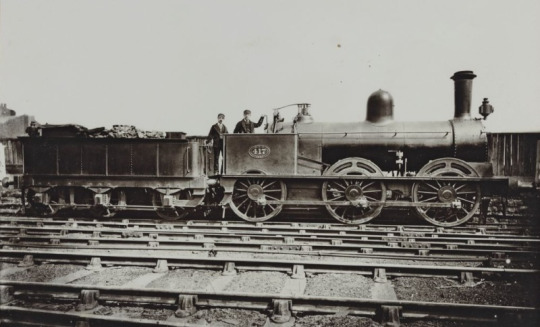
For a class built in the 1850's, these engines sure are modern! By which I mean, they built 943 of them, making it one of the largest locomotive classes in Britain and also one of the first examples of standardisation and mass-production. They were also 0-6-0s, had an equivalent tank engine class (the LNWR Special Tanks) and were all gone by 1930, with none surviving. However, considering the first was built in 1858, that is still a 72-year working life. They were rebuilt several times, caused an injunction by private companies when the L&YR bought 86 fresh from Crewe, and were the LNWR's go-to goods engine.
I still want these engines - and I have more I want to talk about in the future. Unfortunately, it's not easy to discover much about engines from outside the Anglosphere due to the lack of translations out there (I have resorted to Wikipedia in other languages, and then google translate). But it makes finding those oddities that much more fun!
And as usual, all images belong to their respective owners.
#weirdowithaquill#railways#real railways#real railway stuff#LNWR DX Goods#Bavarian s3/6#Japanese 9700#southern pacific#sncb#nmbs#I love real trains#random trains I found#random railways
11 notes
·
View notes
Text
Alright, I’m bored, here’s a list of engine classes I’m sure can be counted among the NWR’s Unseen 80-ish engines. Okay maybe they’re OCs I’m working on, too, what of it?

^ The LNWR 17in “Coal Engines” ^
Good for mixed-traffic on the branches or the Main Line. They’d fit Donald and Douglas’ niche perfectly, but since the last ones were withdrawn from BR in 1953, they’d actually show up before them. Not that that matters; the NWR Numbering System is a shambles and the idea that Sodor had no 0-6-0 tender engines before the Scots is ludicrous. I call Jobey to the stand as my witness!

^ The LMS “Jinty” Class ^
Good for shunting, branches, and main line trip workings. Honestly, the NWR must have four of these scurrying around. First withdrawals from BR were in 1959, by which time Sodor must’ve been on a steam-buying spree and not exactly picky. “Who cares a hang if we have three already? It can go with the one in the sitting room.”

^ The Midland Railway Johnson 0-6-0 ^
Basically Jinties with tenders. So, all the usual roles of the Jinties but able to go further. Many versions existed to make a grand total of 935 altogether, taken out of service within the huge window of 1925-64. I chose the 2F subclass as the pictured example because they’re just. So. Cute.

^ The LBSCR I3 Class ^
Unlike several other Southern Atlantic tanks, these were reliable runners who steamed quite freely. They were built with suburban passenger trains in mind, and even ran successful express trains between Brighton and Rugby! On Sodor I’m sure they’d be made to pull and shunt trucks, pretty much a prerequisite for being a tank engine there. Don’t ask me why, but I just really really like the thought of one working on Edward’s branch.

^ The LBSCR H2 Class ^
These gallopy beauts were made for pulling boat train expresses. So built for them, were they, that several were actually stored during WWII because the cross-Channel traffic vanished. They’d be good for fast, lightish passenger trains on Sodor, and little else. Withdrawn 1956-58, they’d probably be the hardest buy on this list to justify, unless of course they could be induced to take up other work. But I imagine these privileged divas might have preferred scrap to branchlines, mail or, *uptight Victorian shudder* fishhhh trains. *collapses theatrically on a sofa, fanning myself*
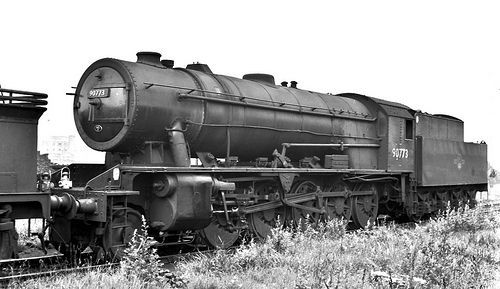
^ The WD Austerity 2-10-0, and 2-8-0 Classes ^
These would’ve been a cheap postwar surplus backbone to heavy freight on the Main Line only, just like the GCR 8Ks in the First World War, who’d be on this list for the same reasons. Rest assured, the NWR would maintain them well rather than use them up to throw away later unlike the Mainland.

^ The GWR 4700 Class ^
I personally never understood why Duck was the only GW engine on the NWR for the longest time. The Hatts were admirers of Swindon, wouldn’t they get first refusal? My headcanon is that Rex was just brand new and not informed enough to know that Duck wasn’t “the only Great Western engine in these parts.”
Okay, lore aside, these handsome dragons-on-wheels were adept at fast and heavy freight both, and were also to be found on passenger trains when needed. If you ask me, they’re mixed traffic. Withdrawn 1962-64, surely a big “get” for the time.
34 notes
·
View notes
Note
The one thing that I want to know after reading about Nobby’s NRM friends is his relationship with the LNWR and midland engines.
Also I’m just imagining a funny what-if if he was shunting alongside Cornwall, Hardwicke, and 49395, and everyone prays that world war 3 doesn’t start lol.
I hate to disappoint, but ‘boringly realistic’ is as you know my brand I don’t see those relationships as being that spicy.
I can definitely see the NRM having a recurring theme where some kindly, enthusiastic, naive soul is like “hey! let’s put all the reeeally old engines next to each other for a while and they can reminisce about Victoria and Albert getting hitched, or whatever! :)” and despite warnings they do it and then all the Reeeeally Old Engines are just staring icily at each other in a sort of eight-way armed standoff, each knowing that the first one to speak is going to set off a relitigation of stale old politics and grievances (from both their working and preservation careers) they all know should be buried sixty years ago, except here they are, all kinda itching to fight ‘em again, but also There Are People Around, and, more importantly, There Are Young Engines Around. Wouldn’t want to set a bad example for impressionable young things like Gazelle and Truro.
But the atmosphere? It’s chilly.
That, however, is the reeeeeally old crowd. It doesn't even include the good-natured M.R. lot.
There is no feud between the Furness and Midland survivors. It was never that severe between them, anyway. In fact, back in their working days F.R. No. 4, Coppernob’s brother, would ramble about his admiration of the glamorous Midland 1757 ‘Beatrice’. Remembering his twin’s old fanboy crush, Nobby sank into a deep funk for two days when he heard Beatrice had been dismantled. (This was right before Grouping, and Nobby had no idea just how scrap-happy life was about to get.)
Back in Coppernob’s working days there was just the usual neighborly rivalry when you have two railways full of puffed-up steam engines. The M.R. loved when it finally had a rival company that they could look down upon for underpowered engines—it made such a nice change from their situation at all the other junctions ('The M is for Midland, with engines galore/Two on each train, and begging for more!'). The F.R. rolling stock resented the existential threat that the Midlanders represented, and resented some of their snubs and titters at their rather sorry ‘boat trains’ even more. But the whole thing largely simmered down sometime in the 1880s when the Furness directors firmly told the M.R. that they could pay them roughly six bajillion dollars for their company or they could fuck off, and the M.R. chose the latter option.
Coppernob and 158 are the only two still alive who even remember the thing. There is no grudge. 158 never even worked those regions, and even if she had it’s unlikely Nobby would hold it against her. He can be petty—but he’s not that petty. And 158 couldn’t hurt a fly, let alone stir up century-old bad blood. Among other things, it would be unsporting. There are a good few pre-Grouping Midlanders in the National Collection, and then there’s Nobby all by himself. That would just be mean.
So Nobby is on good terms with all the surviving Midlanders that he's met, and positively cozy with their composite six-wheeler. If he and 158 haven’t become friends, it’s largely down to the fact that, while they have a lot in common, it’s the sort of life experiences that are very painful and they just haven’t gotten round to opening up to each other in that way yet. Maybe give them another fifty years and we’ll see.
But then there’s the L.N.W.R., haha. The Midland just wanted to buy them out and take over their entire outfit, pah! You can fight that. What the L.N.W.R. did hurt way worse. The F.R. had to make a huge noise and fuss to get the 'old' North-Western to even notice them.
The keynote of the F.R.’s rivalry with them in the old days was that the London and North Western was one of the greatest railways in the world and the truth is that the Furnessians admired them very much. The F.R. took a lot of cues on how to do things from their great neighbors to the south (except—unfortunately, from the engines’ point of view—they never bothered to try to imitate the Crewe Works. But, for example, even Nobby’s preservation was itself a very ‘big North-Western’ move on their part). The scrappy, spirited Furnessians were hate-‘em-‘cause-they-ain’t-‘em. They aspired to be them, they never would be them, and whenever the L.N.W.R. noticed their existence they found the F.R.’s little attempts to compete with them entertaining. (You can maybe see why Nobby has a soft spot for James.) Nobby spent much of his first forty years running on pure spite of the ‘North-Western.’ He was always enormously (and not unjustly) proud of his life’s work in helping the F.R. expand and succeed—but that pride was always shattered bitterly whenever he ran into boastful L.N.W.R. stock, who never failed to remind him, with great heartiness, how poor and tardy and out-of-date their whole outfit was. It would throw his whole system out of order for days. He and the rest of his lot hated them—and they simply thought of the Copper-Nobs (when they thought of them at all) as quaint, funny, mildly annoying little things.
This sort of rivalry is just the worst.
The power imbalance has straightened out since 1900, though. Coppernob himself (against all expectations back in the 1840s, when the F.R. had like twelve miles of track and not quite as many coaches) was newsworthy by the time he was withdrawn, if from nothing but the sheer stubbornness of working what was at the time the longest career on British rails.
A quarter-century later, he and Columbine turned over a new leaf when they were put on display next to each other at the Wembley Exhibition—it was really nice for both of them to put away all the old nonsense and actually get to know each other, and they are penpals to this day. (They were also insufferably haughty about their good sense and deportment. The only reason it wasn’t on sight for the two of them was because Flying Scotsman and at least one of the Castles were there, already making a “scene.” Coppernob and Columbine bonded immediately as they basically pretended that they had never been so silly as that, and why were the new Big Four so eager to produce engines with more tractive effort than sense, and yes indeed, back in their day they knew how to express their differences with grace, and—)
It was at the Exhibition of ’25 that the world got to see Nobby’s “guest manner” in action. His whole crotchedy-grandpa-with-a-heart-of-gold shtick that he’d developed while stuck at Barrow Central proved a huge success. (The L.N.W.R. emeriti had mostly been departmental engines once withdrawn—they'd had to develop some public relations game too, but 'talking to visitors' hadn’t been literally their only duty they’d had to practice 24/7 for the past eighteen years.) It sure impressed the hell out of Columbine, and it inspired her to up her game—and to go home and make sure the rest of her railway elders did too. So yeah, ironically enough we did wind up in a situation where (for once! a-men) it was the proud Crewe engines who were scrambling to keep up with a Copper-Nob.
(It’s lucky that Nobby didn’t really grasp the scale of his success at Wembley and indeed the influence he had on the entire British preservation circuit until much later. By the time he did it was well after the Barrow Blitz and he was so famous that it didn’t really matter that his dome grew three sizes that day. Getting bombed? That wasn’t heroic, he didn’t bloody do anything. Becoming as popular as the entire L.N.W.R. lot put together? Now, that. That’s a proper ego boost!)
Most of Nobby’s London and North Western contemporaries—the ones with whom he ever had any real enmity, the ones who used to humiliate him and his—are scrapped. But there are significant strains on their modern truce. He and Cornwall, even though they Conduct Themselves Appropriately, have such a foul enmity poisoning the air between them that they are always housed in different museums. Hardwicke is a generation after all these grand old ‘C’s and perhaps would have been on neutral terms with Coppernob, especially due to their mutual friendships (including with Columbine) and to the sense, shared by all the M.R. engines, that it would be just vulgar to gang up on Coppernob when he’s a party of one… except Nobby once gossiped in Hardwicke’s hearing about the long-dismantled Lady of the Lake (“ ‘Lady of the Lake,’ pah. ‘Witch of the Lagoon,’ more like!” — h/t @houseboatisland) Understandably Hardwicke found this pretty disrespectful and came to the conclusion that Coppernob’s double-edged tongue makes two-or-three on one a perfectly fair match, in his case! While Hardwicke is not as deep in the feud as Cornwall, he does of course back up his old fleetmate and mentor whenever conflict breaks out.
Nobby had no grudge against the old Crewe saddletank on principle—he’d never even heard of her until the 1950s—it’s her personality that led to him rejecting her. (He’s not alone; she’s pretty widely disliked. 1439 has seen and participated in far more scrappings than any living being should and she is, to put it mildly, a little too quick to share a morbid memory.) ‘Pet,’ however—the other old Crewe shunter, the narrow-gauge one—is a much more personable engine and popular with just about everybody; she reminds Nobby in particular of Poppet.
Unlike Nobby’s great success with the M.R. coaches, the old Wolverton carriages maintain the old snobbery in full measure and do not deign to speak to any engines they consider inferior to the L.N.W.R. engines who used to handle them. They've even snubbed the Rocket (yes, the real one), so we can expect that quaint little Coppernob will be in that scorned category forever. (He hasn’t exactly lost sleep over it. I’m not 100% sure he’s even noticed the silent treatment—it took him decades to strike up a conversation with his friend the Midland composite. Engine classism ftw!)
17 notes
·
View notes
Text
My First Story
I wrote this like 2 years ago, and have only now rewrote it for an au that I haven't touched in a while lol.
TL;DR Sodor is more industrialized, the pre-NWR railways are more prosperous, and industries are backdated. It's all mainly inspired by Sudrian Histories so go check that out.
Please enjoy and please be nice lol.
The Loaned Engines
Edward the Blue Engine was, to put it simply, exhausted. Being one of the NWR’s only tender engines, he was frequently used, and frequently tired. Now don’t get him wrong, he had been expecting hard work, (It was much better that sitting in the shed out-of-use back on the Furness), but this was more akin to being run into the ground. He had to deal with Express trains, boat trains, light goods work (which he had to shunt himself) and even the evening mail train! The only other tender engines were Crovan and Varian, though Edric was converted from a tank engine, and he wasn’t fast enough for most of Edward’s trains, and with Crovan and Varian already busy with goods trains, almost exclusively double-heading, this left the newly-painted blue engine in a bad mood, though he tried to hide it as much as he could.
“Oh - I hope the Director can get some more engines loaned in!” said Edward in the sheds that night, “I am EXHAUSTED”
“You and me both!”said Rognvald, a tank engine from the old WSR,“These yards are extremely difficult to handle right now…. And that’s not even mentioning the station and the coaches and the bloody stupid workmen and the rude foreign engines who always seem to have an opinion and-”
“‘Vald, your rambling again”
“.......sorry Edward, it - it's just a lot right now…”
“ Well besides” , continued Edward, “Isn’t Thomas helping out?”
“ Pah!--the idiot does more harm than help. He gets on my nerves far to easily”
“ Now, now, he isn’t that bad-”
“ NOT THAT BAD - but of course you would say that, you're the only one he listens to for some reason!”
“ Well….anyways, I have to leave for the mail, bye ‘Vald! ”
Rognvald only gave a grunt in reply. It was a good thing he did have to leave, or else he would have said some very bad words just then…..
The Fat Director came the next day. He had important news that all the engines would be thankful for. Though he considered just leaving then and there when he had trouble getting everybody’s attention….
“ SILENCE! ”, he bellowed at last.
“ Now then, now that I finally have your attention, I am very pleased to announce that the LNWR, Highland railway, and Great Central have agreed to loan us some big engines to help us out! They will be arriving in a few days, and I expect you all to give them a warm welcome and if you all ruin this in any way I will. go. Feral. …. Now have a good day! ”
He left for the station cafe.
“He said that all in one breath…”
A few days later, Edward was shunting some coaches. He dropped them off in the carriage sidings and made his way back to the sheds. He was mildly surprised to see 4 large engines simmering outside the sheds. Two were painted green, with red-and-white lining and red frames to match. One was a darker green with long splashers, and the last was painted Black. All of them were just lazing about with differing expressions on their faces.
‘Must be the loaned engines’ He thought. ‘I should go introduce myself!’
“Hullo!”
The engines looked at him. The black engine was unamused and frowned, the dark green engine was angry at something, and the green engines looked mildly intrigued.
At last, the black engines spoke.
“Who are you, exactly? We were told that this No-Where railway’s main passenger engine was to arrive here. Are you covering for him or something? Also, you really need to be cleaned, I mean you are filthy!”
“And tiny as well!” Said the larger green engine.
Edward frowned. He did not have the energy for this.
“ I am the main passenger engine, I’ll have you know! I’m Ed-”
“ You can’t be serious...”
The look on her facing was one of disgust and disbelief, and was shared with the larger green engine. The dark green engine was annoyed and the smaller green engine thought it was a great joke.
Before Edward could reply, the Black engine spoke again.
“It’s no wonder that your Directors had to beg for us to come here, if they have tiny things like you running around!”
“Yeah!”said the larger green engine, “ You’re ancient, I mean, you look 40 years old! ”
“ I’ll have you know that I’m only 25! ”
“Whatever ya say blueberry…”
“ BLUEBERRY ”
“Aight that's it-SHUT UP”
All three arguing engines looked at the dark green engine. She looked livid.
“ Ahm no’ dealin’ wit this right now. I’m fookin’ tired, I’m angry, and I’m at some fookin’ railway in the boonies where their best engine is a blueberry-”
“ I say!- ”
“ Now I'm goin’ tae go take ah nap. Don’t talk tae me fer the next few hours unless ya want meh tae run ya into the shed wall.”
With that, she reversed into the sheds.
The smaller green engine soon began snickering.
“ That. Was. Hilarious! Honestly, I can tell I’m gonna have a good time here! Now, since Miss Green-bean is done, I’m gonna go find something else to do! See ya real soon blueberry!”
With that, she left for the yards.
Only the black engine and big green engine were left, but Edward decided that he was just too tired for this right now, and left, leaving the two engines alone.
He made his way to a siding nearby the station to rest when he saw Thomas.
“ Hullo Edward! ” called Thomas. He then saw the expression on Edwards face.
“ What's wrong? ”
“ The loaned engines ”, Edward replied, before he promptly went to sleep in the carriage sheds.
He knew the next few months would be so tiring. Thomas, who actually picked up on what Edward really meant, frowned.
#ttte#ttte edward#ttte thomas#ttte loaners#ttte ocs#No-Where Railway#All of their basis's changed like several times over#lol#Hope you all enjoyed#ttte au#Spark Writes
14 notes
·
View notes
Text




Monument Lane at the Warley exhibition, November 2023. Monument Lane was the first station north of New Street on the ex-LNWR Stour Valley Line from Birmingham New Street to Wolverhampton High Level. The layout depicts the station in the late 1950's/early 1960's, during the transition from steam to diesel. The station closed in 1965, one of several stations on the line that were closed in the run-up to electrification.
2 notes
·
View notes
Video
1054 por Hugh Llewelyn
Por Flickr:
LNWR Webb "Coal Tank" (LMS Class "2F") 0-6-2T No.1054 (LMS No.7799; BR No.58926) in LNWR lined black livery at Haworth Shed on the Keighley & Worth Valley Railway, 06/98. Built at Crewe in 1888, No.58926 was the last "Coal Tank" to be withdrawn after hauling the last train between Abergavenny and Merthyr in 1958. Scanned from one of my photographs taken on a Canon ES-1 Programme.
8 notes
·
View notes
Text
The Three Gables
The lack of posts on this one is a clear demonstration of the clear rejection of the racism running through this story.
I can't say that I'm particularly enthusiastic about doing this one, but I can't pretend this one doesn't exist.
Here we go then:
First published in 1926, the Americans again got this one first.
Boxing for money was heavily regulated to the point of outright bans in much of the United States; illegal fights would frequently end as "no contest" when the police turned up.
The Bull Ring in Birmingham is a major shopping area that goes back to a market established in 1154 under royal approval. The area is named for a ring of iron that bulls were tied to for the purposes of bull-baiting, a 'sport' banned in 1835.
The area was redeveloped in the 1960s into an enclosed shopping centre considered an epitome of Brutalist architecture and which became more unpopular over time. It was replaced in 2003 by a more modern centre, branded "Bullring" that is just as controversial.
Harrow Weald is a suburban area of what is now Greater London. It still contains a large amount of ancient woodland despite major development in the early 1930s, such as Harrow Weald Common.
One highly notable resident of the area was W.S. Gilbert of operetta fame, who lived at a house called Grim's Dyke and died of a heart attack in the lake in 1911 while saving a 17-year-old girl from drowning during a swimming lesson. The lake was mostly drained after that and what is left was filled with algae during my visit to the area early this year - the London Loop footpath goes through the area.
The "Weald Station" is probably, as per Bernard Davies, Harrow & Wealdstone station. This is today the northern terminus of the Bakerloo Line, which reached there in 1917 when services were extended on the newly electrified lines to Watford Junction; London Overground services call there on their way to the latter destination. LNWR and Southern services also are available, while Avanti West Coast and Caledonian Sleeper trains go through without stopping on platforms generally closed unless a train is calling there.
The station was also the site of the worst peacetime rail disaster in British history in 1952 (only the 1915 Quintinshill rail disaster has a higher death toll) - an express train collided with the rear of a local train in fog and then another express train hit the wreckage. 112 people died and 340 were injured. Since the crew of the express train died in the crash, the precise reason why they failed to respond to two signals was impossible to establish. The result of the report was a faster introduction into service of the Automatic Warning System or AWS that gives a driver an in-cab indication of the state of a signal by visual and auditory means.
A two-station branch line to Stanmore Village closed in 1964 as part of the Beeching cuts.
Paregoric is a 4% tincture of opium, then available over the counter without prescription. Its main uses would be for treating diarrhoea, treating teething pains in children and as a cough medicine. It is today a Schedule III controlled substance in the US i.e. prescription only.
Crown Derby refers to Royal Crown Derby, a porcelain company founded c.1750 and still going today; it may be the oldest still active company in that field in England.
Langdale Pike is clearly a pseudonym, referring to a series of peaks in the Lake District.
This is, fortunately, the only time we have the n-word being used in the canon. It was considered a crude term even then.
Pernambuco is a state in NE Brazil, then a centre of sugarcane cultivation, still a major part of its economy. It was historically Portuguese, not Spanish.
Yes, let's stereotype Latina women, shall we, Mr. Doyle? I'm not calling you Sir Arthur in this discussion; you're not acting like a knight.
This whole thing leaves a rather ugly taste and if I could strike a story from the canon, I would do it for this one.
#letters from watson#sherlock holmes#history#factoids#acd canon#the three gables#3gab#an utterly racist story
14 notes
·
View notes

